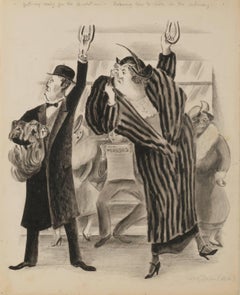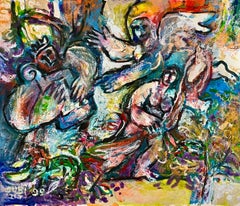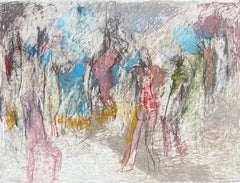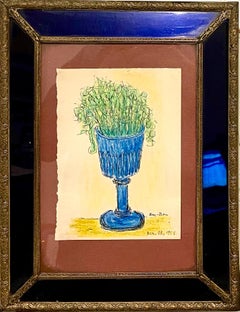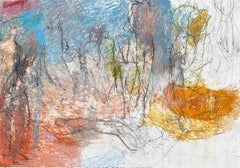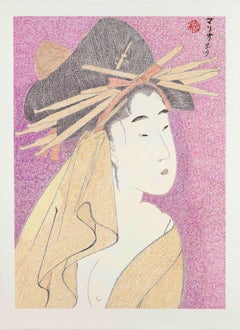Oil Crayon Figurative Drawings and Watercolors
1930s American Modern Oil Crayon Figurative Drawings and Watercolors
Oil Crayon
20th Century Post-Modern Oil Crayon Figurative Drawings and Watercolors
Paper, Oil Crayon, Mixed Media, Watercolor
2010s Contemporary Oil Crayon Figurative Drawings and Watercolors
Oil Crayon, Mixed Media, Handmade Paper, Graphite
1950s Expressionist Oil Crayon Figurative Drawings and Watercolors
Paper, Oil Crayon, Pastel, Ink
2010s Contemporary Oil Crayon Figurative Drawings and Watercolors
Oil Crayon, Mixed Media, Handmade Paper, Graphite
2010s Edo Oil Crayon Figurative Drawings and Watercolors
Paper, Crayon, Oil Crayon, Graphite
21st Century and Contemporary Contemporary Oil Crayon Figurative Drawings and Watercolors
Oil Crayon
21st Century and Contemporary Contemporary Oil Crayon Figurative Drawings and Watercolors
Oil Crayon
21st Century and Contemporary Contemporary Oil Crayon Figurative Drawings and Watercolors
Oil Crayon
21st Century and Contemporary Contemporary Oil Crayon Figurative Drawings and Watercolors
Oil Crayon
Mid-20th Century Expressionist Oil Crayon Figurative Drawings and Watercolors
Paper, Oil Crayon, Pastel, Ink
20th Century Post-Modern Oil Crayon Figurative Drawings and Watercolors
Paper, Oil Crayon, Mixed Media, Watercolor
1990s Contemporary Oil Crayon Figurative Drawings and Watercolors
Paper, Oil Crayon
1940s Fauvist Oil Crayon Figurative Drawings and Watercolors
Paper, Oil Crayon, Pastel
2010s Contemporary Oil Crayon Figurative Drawings and Watercolors
Oil Crayon, Mixed Media, Handmade Paper, Graphite
2010s Contemporary Oil Crayon Figurative Drawings and Watercolors
Oil Crayon, Mixed Media, Handmade Paper, Graphite
2010s Contemporary Oil Crayon Figurative Drawings and Watercolors
Oil Crayon, Mixed Media, Handmade Paper, Graphite
2010s Oil Crayon Figurative Drawings and Watercolors
Oil Crayon
20th Century Post-Modern Oil Crayon Figurative Drawings and Watercolors
Paper, Oil Crayon, Mixed Media, Watercolor
2010s Edo Oil Crayon Figurative Drawings and Watercolors
Paper, Crayon, Oil Crayon, Graphite
1980s Contemporary Oil Crayon Figurative Drawings and Watercolors
Oil Crayon, Wax Crayon
2010s Edo Oil Crayon Figurative Drawings and Watercolors
Paper, Crayon, Oil Crayon, Graphite
2010s Edo Oil Crayon Figurative Drawings and Watercolors
Paper, Crayon, Oil Crayon, Graphite
2010s Edo Oil Crayon Figurative Drawings and Watercolors
Paper, Crayon, Oil Crayon, Graphite
2010s Edo Oil Crayon Figurative Drawings and Watercolors
Crayon, Paper, Oil Crayon, Graphite
2010s Edo Oil Crayon Figurative Drawings and Watercolors
Paper, Crayon, Oil Crayon, Graphite
2010s Edo Oil Crayon Figurative Drawings and Watercolors
Crayon, Paper, Oil Crayon, Graphite
1950s Post-Impressionist Oil Crayon Figurative Drawings and Watercolors
Conté, Oil Crayon, Archival Paper
2010s Edo Oil Crayon Figurative Drawings and Watercolors
Paper, Crayon, Oil Crayon, Graphite
1990s Contemporary Oil Crayon Figurative Drawings and Watercolors
Paper, Oil Crayon
2010s Edo Oil Crayon Figurative Drawings and Watercolors
Paper, Crayon, Oil Crayon, Graphite
2010s Edo Oil Crayon Figurative Drawings and Watercolors
Crayon, Paper, Oil Crayon, Graphite
2010s Edo Oil Crayon Figurative Drawings and Watercolors
Paper, Graphite, Crayon, Oil Crayon
2010s Contemporary Oil Crayon Figurative Drawings and Watercolors
Oil Crayon, Mixed Media, Handmade Paper, Graphite
2010s Edo Oil Crayon Figurative Drawings and Watercolors
Crayon, Paper, Oil Crayon, Graphite
2010s Edo Oil Crayon Figurative Drawings and Watercolors
Crayon, Paper, Oil Crayon, Graphite
2010s Edo Oil Crayon Figurative Drawings and Watercolors
Paper, Crayon, Oil Crayon, Graphite
1980s Contemporary Oil Crayon Figurative Drawings and Watercolors
Paper, Oil Crayon
21st Century and Contemporary Contemporary Oil Crayon Figurative Drawings and Watercolors
Gesso, Paper, Oil Crayon, Ink, Mixed Media
